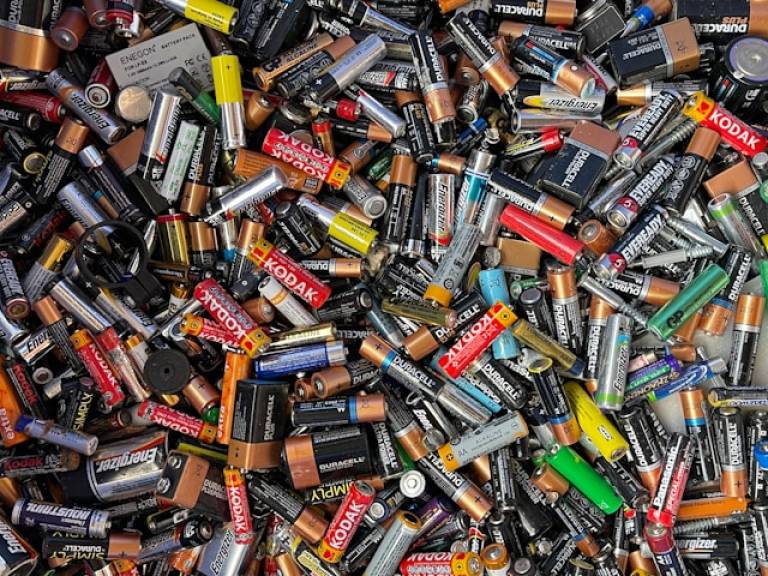Hazardous waste disposal in your department
19 March 2024
We all know the importance of safety in the lab, but did you know that hazardous waste can be lurking in unexpected places across campus? Departments are responsible for ensuring the safe disposal of hazardous materials.

Why proper disposal matters
Did you know that seemingly ordinary items in your department can be hazardous waste? Along with the expected chemicals and solvents, everyday things like light bulbs, batteries and old electronics fall under this category. Improper disposal of these items can pose a threat to human health and the environment.
While chemicals and solvents are classic hazardous waste examples, here are some commonly overlooked items that require special disposal:
- Light bulbs: Fluorescent light tubes can contain harmful materials, so they can't go into the regular waste channels. If you need to dispose of fluorescent tubes, please raise a service request via MyCampus.
- Batteries: Regular and re-chargable batteries (AA, AAA, C, D, 9V, etc) contain heavy metals that can leach into the environment. To keep them out of landfills they require specific waste streams. Many UCL buildings have a battery recycling bin located near the main building entrance or reception.
- Lithium-ion batteries: Unlike regular batteries, lithium-ion batteries found in laptops and phones require special handling. To avoid fire hazards, don't throw them in regular battery recycling bins. Instead, submit a service request through MyCampus for safe collection and proper recycling.
- Electronic equipment: Computers, monitors, printers and other electronics fall under WEEE regulations and require specialised recycling.
Don't be surprised! This list isn't exhaustive. If you're unsure whether an item is hazardous waste, err on the side of caution and arrange removal.
What to do with hazardous waste
- Identify hazardous waste: Check the safety data sheet (SDS) that identifies the item's hazardous properties.
- Label it clearly: Clearly label hazardous waste containers with the contents and any relevant hazard symbols. Keep it separate from regular waste and other recyclables.
- Waste Management removal via MyCampus: Log an incident in MyCampus to arrange collection to ensure the waste is handled according to regulations.
By taking responsibility for hazardous waste, we can create a safer environment for everyone. Remember, if you're unsure whether an item is hazardous, err on the side of caution and report it via MyCampus!
Where can I get further information
- Waste, Reuse and Recycling
- Waste Electrical and Electronic Equipment
- Disposal of IT equipment
- Hazardous waste management
- Working safely with chemicals
- COSHH assessment
- MyCampus
Feedback
Help us improve the website and let us know your suggestions, feedback, or comments. Please contact us.
Photo by John Cameron on Unsplash.
 Close
Close

